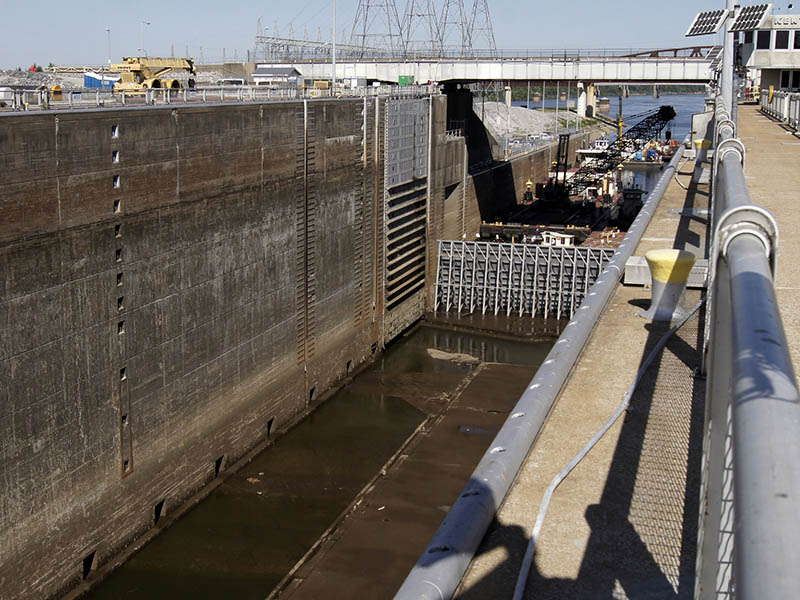As the White House begins the early stages of drafting a national initiative to modernize and repair the nation's sagging infrastructure, the maritime industry is making sure that their priorities are heard.
Infrastructure is the third leg of Trump's three-part legislative agenda: overhauling Obamacare, reforming the national tax code and passing a $1 trillion public-private infrastructure plan. Collapse of the Republican health care bill last Friday could either imperil or help the infrastructure package. This will depend on how the White House prioritizes its next move, repairs damage within the GOP and secures Democratic votes needed to pass the rest of Trump’s agenda.
While some believe the entire agenda is now in jeopardy, former House Speaker and Trump campaign adviser Newt Gingrich has suggested that tax reform be postponed and infrastructure be taken up next, as it could attract more bipartisan support. Trump's strategy going forward is still evolving.
Before the health care bill's rejection last week, officials from the Waterways Council Inc., an industry-supported advocacy group for river infrastructure funding, met with members of the White House team working on the infrastructure initiative as well as Transportation Secretary Elaine Chao to outline their priorities.
"We had a very cordial meeting with a good discussion about the 'silent R' for rivers, and specifically including inland waterways infrastructure in any administration initiative," WCI president and CEO Mike Toohey said after the meeting. "The secretary was supportive of our request and asked for a copy of our submission to the [Trump] transition team."
Inland industry leaders attending WCI's annual meeting in Washington last week, also met with members of Congress to press the case for waterways inclusion.
The waterways wish list asks for $8.7 billion over 10 years for construction of river navigation projects that have already gotten the green light from Congress. If funded, this proposal would expedite completion of 25 modernization projects throughout the country, including in Pennsylvania, Ohio, Kentucky, Missouri, and Tennessee — all states that President Trump carried in the election.
Projects currently under construction include the Chickamauga Lock and Dam and Kentucky Lock and Dam on the Tennessee River, Lower Monongahela Locks and Dams in Pennsylvania, and the Olmsted Locks and Dam on the Ohio River in Kentucky. Projects authorized and awaiting construction include three along the Gulf Intracoastal Waterway in Texas and Louisiana, three on the Ohio River in Pennsylvania, six on the Mississippi River in Missouri and Louisiana, and one on the Illinois River. In addition, the list includes seven major rehabilitation projects that are ready for construction along the Illinois, Ohio and Little Calumet rivers.
"These projects are in key states carried by President Trump and benefit a vital constituency, farmers, manufacturers, and the men and women of the construction trades," WCI's submission paper said.
The Trump Transition Team's list of 50 top projects that was shared in January with the nation's governors includes nine port and waterways projects. Many are among WCI's priorities. Dredging Savannah Harbor and the Mississippi River Shipping Channel in southern Louisiana, reconstructing the Soo Locks on the Great Lakes, and improving the Port of Newark Terminal also are listed.
Toohey said WCI's goal is to work all angles to influence the White House and Congress to include river navigation in any final package. This includes getting shareholders of the waterways to speak to their elected representatives, meeting with cabinet and administration officials, and asking supportive members of Congress to press the case with the administration. "All that is going on now," he said.
Also on WCI's wish list is changing the cost formula used by Inland Waterways Trust Fund to finance river navigation construction projects. The trust fund currently shares the project cost with the federal government 50-50. WCI seeks a temporary cost-share of 75% federal and 25% from the trust fund, which is financed by the barge industry through a 29-cent per gallon tax on diesel fuel.
Meanwhile, the nation's ports have also gotten in the game. Last Wednesday, the American Association of Port Authorities launched a campaign advocating for transportation infrastructure investment in the nation's ports. Under the "America: Keep it Moving" initiative, port officials will be contacting policymakers about the importance of seaports to the domestic and global economies, stressing their inclusion in a national infrastructure plan.
Among their priorities are funding marine highway programs, modernizing and maintaining federal navigation channels, providing resources for port and border security, and funding programs that reduce the environmental impact of freight transportation.




